'How these curiosities would be quite forgot, did not such idle fellowes as I put them down.'
- John Aubrey
'Oh roads we used to tread,
Fra' Maryhill to Pollokshaws - fra' Govan to Parkhead!
- Kipling, 'McAndrew's Hymn'
'Photography can be a mirror and reflect life as it is, but I also think that perhaps it is possible to walk like Alice, through a looking-glass, observe the puzzles in one’s head and find another kind of world with the camera.' - Tony Ray-Jones
Welcome to my wee photoblog on Glasgow, where we feature the joys and unjoys of walking and cycling through a fascinating, beautiful and often badly run city. For the blog's origin and a list of all posts see the 'Introduction' post -
http://glasgowalbum.blogspot.com/2010/02/introduction.html
Feel free to drop me an email with suggestions, offers of £20 notes etc. The address is damnyouebay@gmail.com. I have had to start watermarking the pics as I have come across one big website using a pic without permission - I suppose there must be others.
If you are a private individual and want to use any of the pics for non-commercial purposes please get in touch and I will usually be happy to say 'Aye' for free - just give the Album a credit. If you want to use a pic for commercial purposes a small mutually agreed fee and a credit will suffice. And you can follow me on Twitter if you wish: Edwin Moore@GlasgowAlbum.
Today is
 |
| Another dramatic Kelvinbridge sky |
 |
| Partick Station |
 |
| The GI Bride |
 |
| Waiting for the Faifley bus |
 |
| Heading along Dumbarton Rd |
 |
| We are in Dumbarton Rd (see link above for more details) |
 |
| Yoker Evangelical Church |
 |
| The now closed Boundary Bar, where Glasgow ends. For sordid tales of drug dealing and a leading Glasgow politician, see last link |
|
 |
| Whitecrook St |
 |
| We are in Clydebank |
 |
| Jobcentre |
 |
| Kilbowie Rd |
 |
| Kilbowie Cafe. |
 |
| We have debussed in Faifley, now walking north through the houses |
 |
| Possibly not an ancient monument, but who can be sure? | This is haunted country |
|
|
 |
| The Stone, we think, is down to the right |
 |
| We ask the lady for directions and she points us the right way (a previous dog walker was unsure). She says they are burying the stone just now |
 |
| An arrow |
 |
| We stick to the left-hand path (not the Aleister Crowley version) |
 |
| We are quite close, can hear the burial clearly |
 |
| Here we are |


 |
From the BBC link -
'A prehistoric stone panel said to be the "most important in Europe" is being unearthed for the first time in more than 50 years in Clydebank.
The Cochno Stone dates to 3000BC and is described as one of the best examples of Neolithic or Bronze Age cup and ring markings in Europe.
Located next to a housing estate, the stone was buried in 1965 to protect it from damage.
Excavation work started on Monday and is expected to last three weeks.
Archaeologists will use 3D-imaging technology to make a detailed digital record of the site.
They hope this will provide more information on the stone's history, purpose and the people who created it about 5,000 years ago.
Dr Kenny Brophy, from Glasgow University, who is leading the dig next to Cochno farm, said: "This is the biggest and, I would argue, one of the most important Neolithic art panels in Europe.
"The cup and ring marks are extensive but the site just happens to be in the middle of an urban housing scheme in Clydebank.
"It was last fully open to the elements and the public up until 1965. Sadly, as it was neglected it was also being damaged through vandalism and people just traipsing all over it.
"Renowned archaeologist Ludovic Maclellan Mann, with a team of experts, decided the best way to preserve it was to cover it over to protect it from further damage."
A trial excavation last year indicated modern graffiti is "probably extensive" over the stone's surface. ' |
 |
|

 |
Here is the Glasgow Uni piece http://www.gla.ac.uk/news/headline_484104_en.html
'The Cochno Stone was taken away from the people of Clydebank in 1965
because of vandalism. We are going to show how digital technology can be
used to resurrect this lost monument and give it back to the people it
belongs to, because we believe that if we trust people, they will look after it.' Hm. |
 |
| I think we'll leave it here. There must surely be a way - in Scotland 2016 - of letting people see a site of world importance, even under perspex or whatever |
 |
| Hey ho. Out on the Cochno Rd. We have our Nokia and the OS Glasgow Explorer map |
 |
| Walking east |
 |
| Turning south |
 |
This was all border country when the Romans were here. We are going to be walking past sites of forts and along a stretch of where the Antonine Wall once was, the northernmost boundary of the Roman Empire. As we said, haunted country
|
|
|
 |
| We are going to side step here for a pee |
 |
| Back on Cochno Rd |
 |
| Paths |
 |
| Two guys emerge from the woods |
 |
| A marked boulder |
 |
| Figures in a landscape |
 |
| Pylons ahead |
 |
| Law Farm |
 |
| Coming onto the road between Hardgate to the west and Langfaulds to the east (where we are heading) |
 |
| Wasps destroyed £25 |
 |
| We make a poor decision and decide to walk south down this road. Do not do this readers | |
 |
| Run out of pavement |
 |
Cavalry from the fort above would have patrolled down here. (The marking on the Cochno Stone predates the Roman presence by 1000 years.). From the fab Antonine Wall site on Castlehill -
http://www.antoninewall.co.uk/castlehill_roman_fort_old_kilpatrick.html
'. . . a 500 strong mixed infantry and cavalry Regiment was recorded there -
the Fourth Cohort of Gauls ( cohors IV Gallorum quingenaria equitata). They had previously been assigned to Castlesteads on Hadrian's Wall and, after the abandonment of the Antonine Wall, would man the outpost at Risingham. Later in the third century AD the Regiment was recorded at Vindolanda. . .'
See the above link for more details, and of of how to do the sections of this walk properly and safely. See also Charlotte Higgins' splendid book Under Another Sky: Journeys in Roman Britain https://www.amazon.co.uk/Under-Another-Sky-Journeys-Britain/dp/0099552094/ref=sr_1_1?ie=UTF8&qid=1479375933&sr=8-1&keywords=charlotte+higgins
|
 |
| Mattresses |
 |
| Should we turn back? It would be best to but we judge there is diving space by the road |
 |
| A tyre bush |
 |
| Hm more cars about than we like |
 |
| Safety at last |


 |
Garscadden Wood either side. See
http://scotland.forestry.gov.uk/visit/garscadden-wood
From the excellent site:
Enter Glasgow's forest
'This tranquil woodland, with its majestic ancient oaks and old hawthorn hedges, has been growing on this hillside on the edge of Glasgow for hundreds of years. It’s a wonderful wood to visit for a picnic, stroll or cycle ride any time of the year. Enjoy dramatic views over the city and glimpses of wildlife amongst the trees and in the meadows.
Glasgow City Council owns the land here, while we at Forestry Commission Scotland manage the woods. Together, we have improved the trails across the Easterhouse Woods and planted new native woodland to create more green spaces for people and wildlife in the city. There are about 3 miles (5km) of informal paths through the woods. Most of them are wide and smooth – ideal for walking, running and cycling – but watch out for a few short steep slopes. It’s a popular place for Paths for Health walks too – a fun and sociable way to enjoy the woods and get some fresh air. Our leaflet map will help you explore the Drumchapel Woods area.
'There are two parts to Garscadden Woods: the old oakwood beside Drummore Road, and the new woodland and meadow above Ladyloan Avenue. You’re welcome to explore and enjoy both, but be aware that they’re separated by the busy Peel Glen Road. Please take care crossing this road.'
You can walk to Castlehill (also called the ‘Witches Circle') from here (we are taking the other side) |



 |
| We are heading over there | . |
 |
| The Castlehill path |
 |
| We will be following that chap and his lovely dogs |
 |
| We take the rght-hand path |
 |
| Looking back |
 |
| The path of the Antonine Wall is over there, middle distance |
 |
| Looking back |
 |
| We are heading up here |
 |
| Dookit |
 |
| Silage opration |
 |
| Tremendous vehicles |
 |
| Our path is this way |
 |
| A sepia version |
 |
| I love my Nokia maps |


 |
Auden’s portrait of a sentry on Hadrian’s Wall is memorable -
Roman Wall Blues
Over the heather the wet wind blows,
I've lice in my tunic and a cold in my nose.
The rain comes pattering out of the sky,
I'm a Wall soldier, I don't know why.
The mist creeps over the hard grey stone,
My girl's in Tungria; I sleep alone.
Aulus goes hanging around her place,
I don't like his manners, I don't like his face.
Piso's a Christian, he worships a fish;
There'd be no kissing if he had his wish.
She gave me a ring but I diced it away;
I want my girl and I want my pay.
When I'm a veteran with only one eye
I shall do nothing but look at the sky.
A posting on the Antonine Wall was actually probably not a bad deal despite the weather. Caledonia may well have swallowed the 9th Legion, but the dark forest of the German frontier was a lot scarier - long before the Antonine was built, the Battle of the Teutoberg Forest consumed three Legions and their auxiliaries. "Quintili Vare, legiones redde!“ said Augustus, 'Quintilius Varus, give me back my legions!’.
Nor was a posting on the eastern frontier any cushier, looking anxiously out onto steppes which could conceal hordes of horsemen. Hear Andrew Bird -
https://www.youtube.com/watch?v=JSBLSfhVSR0 |
 |
| Clydebank Golf Club on right |




 |
From the excellent Clydebank Local History Society site -
http://www.clydebankhistory.org/conc/index.php/clydebank-history/hardgate/
'There is evidence of early settlement with a Neolithic burial site at Knappers Farm Drumry on the Boulevard, cup and ring markings on exposed rocks at Cochno and a burial chamber at Cairnhowat above Cochno Loch. However it was the Romans who left the most trace of their presence with the building of the Antonine Wall and ditch with associated fortlet and fort in what is now the Goldenhill Park. The wall, stretching from Bo’ness on the River Forth to Old Kilpatrick, marked the north- western frontier of the Roman Empire and is now a World Heritage Site. It consisted of a turf rampart about 10 feet high built on a stone base and perhaps surmounted by a wooden palisade to the north. . . The Roman Legions, Second, Sixth, and Twentieth were responsible for building separate sections of the wall which they marked with carved ‘distance slabs’. When the wall was finally abandoned about 164 A.D. these were buried; several have been found locally and along with other artefacts can be seen in the Hunterian Museum. . . '
A brilliant summary. Visit the CLHS site for the full piece. |




 |
| Looking back |
 |
| I do like drain covers |
 |
| Back onto Kilbowie Rd |
 |
| On bus again |
 |
| Striking bus shelter notice |
 |
| End of the Line Scotland. The Antonine sentries would take the point |
 |
| Some great shopfronts in Scotstoun |
 |
| Stardust Newsagents |
 |
| Kelvinbridge again |
Thank you for browsing, dear visitor.
Reviews of Scotland: 1000 Things You Need to Know (coming in November 2016 from Atlantic Books: a new edition, 1001 Things!)
RADIO AND TELEVISION
'I love it - I'm giving this copy to a friend and buying another for myself' - Darren Adam, Presenter, Radio Forth, 17 November 2008
‘It’s a great wee book’ – Stephen Jardine, introducing Edwin Moore on Scottish Television’s Five-Thirty Show
'A fantastic book' - Scott Wilson , talk 107 Breakfast Show host
'A great read' - Dougie Jackson, Drivetime host, Smooth Radio 105.2
THE PRESS
'Despite its apparently humorous format, this is a serious and extensive dictionary on all things Scottish; from Jean Redpath to Lorne sausage, from Flodden to the Corries. Is particularly good on history and minutiae. There's a useful chapter on famous Scottish legal cases and another on literature. Excellent' - Royal Scottish Legion, Feb 2009
'This is the ultimate Scottish reference book' - Waterstones Christmas catalogue, 2008
'This is a fascinating look at the history of Scotland: its languages, politics and great achievements, from its origins in the ancient landmass of Laurentia 400 million years ago, to devolution and Billy Connolly. Edwin Moore has collected a thousand important facts about this beautiful country, covering Scottish history and culture, correcting misconceptions, and examining the mysteries of haggis and bagpipes with insight, warmth and impressive attention to detail' - The Good Book Guide, November 2008
'This is a recipe for revealing how horribly ill informed you are about your country. Although, if you are skillful, you can nod sagely as you read some new fact and mutter 'Ah, yes!' as if recalling the information from your excellent schooling. Where else will you find a real recipe for making haggis from scratch side by side with a potted biography of David Hume; a section of the Declaration of Arbroath and the curiously touching fact that Lulu was only 15 when she had a hit with 'Shout'? The whole thing is of course, silly - but oh so addictive.' - Matthew Perren, i-on Glasgow, December 2008
'. . . well crafted and witty' - Bill Howatson, Aberdeen Press and Journal, 18 October 2008
‘While most of Edwin’s entries are entertaining and scholarly – he writes like a Scottish Bill Bryson – it is when he takes an interest in the backwaters of history, the details lost down the back of the sofa, that he is at his best’ – Jack McKeown, The Courier, 27 October 2008
'History, it is said, is written by the victors. Trivia, meanwhile, is written by the guys with the smeared spectacles and the breathable rainwear. The first discipline is linear and causal; to quote from Alan Bennett’s play The History Boys, history is “just one f****** thing after another”. Things look different, though, when viewed through the prism of trivia. The past is reduced to one big coleslaw of fascinating facts that in their randomness tell a more mixed-up tale entirely.
The first approach leads to big, frowning books by the likes of Tom Devine and Michael Fry. The latter results in small, cheerful books such as Scotland: 1,000 Things You Need to Know, Edwin Moore’s valiant attempt to navigate the more trivial contours of enlightenment and clearances, crown and parliament, dirt and deity.
Moore proceeds from a sincere and controversial first principle: Scotland is really a rather pleasant and interesting place. . .As a work of popular scholarship, though, it’s in a different league to the Scottish novelty titles that get stocked next to the bookstore tills as potential impulse purchases, those little handbooks of parliamo Caledonia and regional braggadocio, such as Weegies vs Edinbuggers.' - Allan Brown The Sunday Times, 21 September 2008
'In his book, Scotland: 1000 Things You Need to Know, Edwin celebrates all that sets us Scots as a race apart - our language, law, flora, food, and of course, our people. From our poets, architects and inventors, to our artists, entertainers and fighters. But he doesn't shy away from the more unpleasant aspects of our history. . .' - Robert Wight, Sunday Post, 14 September 2008
‘We think we know all about William Wallace, Robert the Bruce and the Union of the Crowms. However, according to Edwin Moore, author of , Scotland: 1000 Things You Need to Know, we’re still in the dark about many aspects of our history and culture. . . The Big Issue looks at 20 of the most astonishing examples of secret Scotland.’ – The Big Issue, 18-24 September 2008
'What's the connection between Homer Simpson and Larbert, and why are generations of lawyers grateful to a Paisley snail? Need to know more? Author Edwin Moore has gathered 1000 facts like these about Scotland in a quirky new book. Brian Swanson selects a few favourites. . .' - Scottish Daily Express, 13 September 2008
'The palm for Christmas-stocking books seems to have passed recently to popular science, with best selling titles every year such as Why Don’t Penguins’ Feet Freeze? This year there has been a gallant attempt at a historical fight back. Scotland: 1,000 Things You Need to Know(Atlantic Books, £12.99) asks (and answers) such post-turkey questions as ‘How many kings of Scotland died in their beds?’, ‘Who on earth decided that the Declaration of Arbroath was the cornerstone of modern democracy?’ or ‘Why is iron brew spelled Irn-Bru?’ Mark Mazower,History Today; The Best of History in 2008, December 2008
'A real treat for the serendipitous Scotophile' - Reginald Hill
FROM THE INTERWEB
www.Booksfromscotland.com (on the new paperback edition)
Book of the Month, May 2010
'Whether it's Scottish lochs or Enlightenment philosophers, the facts of the devolution referendums or the mysteries of Irn-Bru, myths will be debunked and truths revealed in this light-hearted but rigorous overview of Scottish history and culture.'
Here are some reviews of my Brief Encounters, published by Chambers in 2007 and now free on the web! -
http://100briefencounters.blogspot.co.uk/2016/01/100-brief-encounters.html
Edwin Moore's quirky collection of a hundred encounters between (mostly) important historical figures is a gem of a book. Where else could you get concise enlightening accounts of Henry VIII wrestling with Francis I, Geronimo surrendering to General Miles, Ernest Hemingway presenting Fidel Castro with a fishing trophy or (as seen on the books cover) a baby faced Bill Clinton shaking hands with John F Kennedy. A marvelous 'little window on human history. ' - Dominic Kennerk, Waterstone's Product Planning and Promotions Co-ordinator (From the Waterstone's 'We Recommend' list for 2008)
Witty, light and packed with information -- The Sunday Herald
In 1936, in the wake of winning a clutch of gold medals at the Berlin Olympics, the great athlete Jesse Owens was snubbed by an imperious leader, on racial grounds. Popular belief would have it that the leader was Hitler, who is said to have stormed off, furious to see a black man beating European athletes. In fact the man in question was President Roosevelt, who worried that paying attention to Owens' triumphs might be a vote loser. Although Owens and the German Chancellor never talked, Owens claimed that Hitler greeted him with an enthusiastic wave. Such near-misses, shakings of hands and ships-in-the-night meetings are the subject of Brief Encounters – Meetings between mostly remarkable people, a likeable new book by Edwin Moore (Chambers £7.99). Flicking through the index, you will find some expected encounters (Dante stares at Beatrice, Corday stabs Marat, The Beatles strum along to a Charlie Rich record round at Elvis's house), and the book's intriguing and memorable cover shows a baby-faced Bill Clinton manfully gripping the hand of JFK. But Moore has navigated past some of the more obvious collisions, collusions and confrontations of history (there is no Dr Livingstone, I presume) and much of the book's pleasure derives from lesser known incidents.
Inevitably, some of the accounts of earlier meetings are somewhat sketchy but Moore offers some piquant speculation, laced with humour (the book is tagged Reference / Humour, rather than History and this feels right, but the book, though wry and opinionated, never stoops to wackiness). I was intrigued to discover that, though Attila the Hun did die on his wedding night, it was not in drunken and lecherous debauchery, as his enemies maintained, but supposedly because he was generally a simple and clean-living man who had a few too many which brought on a particularly bad nosebleed.
Moore's book is full of such tales – it would be wrong of me to steal the tastiest morsels of his research and pepper this article with them, but look out for a subsidiary reason for the Gunpowder Plot (too many dour and powerful Scots in Parliament); a great meeting of great beards, as Castro wins the Hemingway prize for sea-fishing; Dali bringing a skeptical Freud round to the art of the surrealists; Buffalo Bill's wife claiming an aged Queen Victoria had propositioned him; Oscar Wilde getting a kiss from Walt Whitman, while Walter Scott was more taken with Burns's charismatic eyes. This is an enjoyable and vigorous rattle through some fascinating and believable yarns. My only quibble is that it's a little on the short side – let's have Volume 2 please Chambers! - Roddy Lumsden, www.Books from Scotland.co.uk



























































































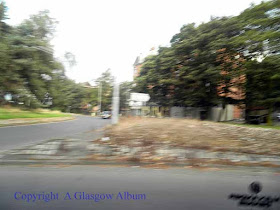



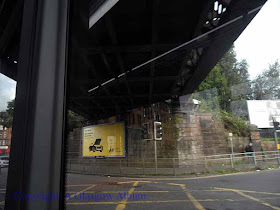











































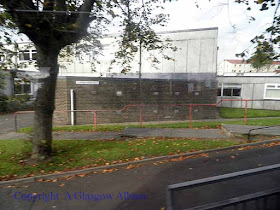


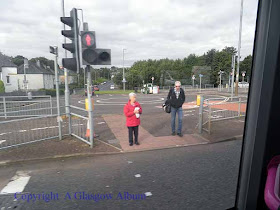










































































































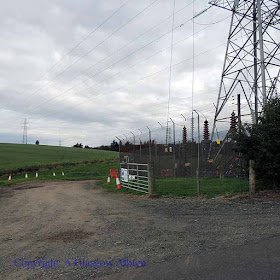













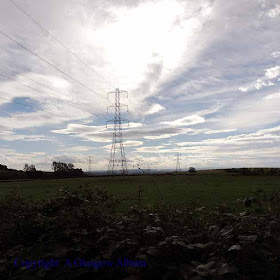








































































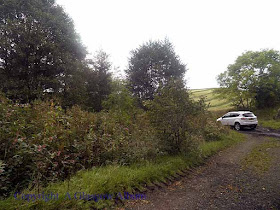





























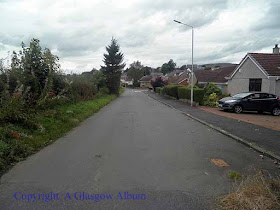













There's a lot of loneliness in that blog Ed. Lonely landscape, empty lanes, haunted remains of people long gone, closed shops, solitary figures...quite eerie looking parts of it.
ReplyDelete